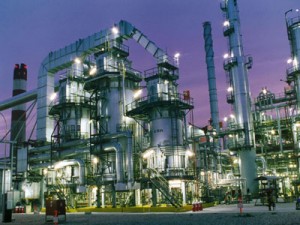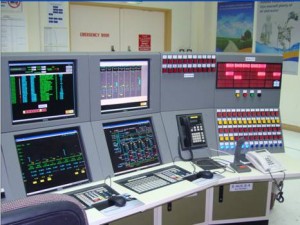
The yellow ‘post it’ on the fridge read, “Tariq, Don’t forget to buy Milk”. I felt annoyed with my mother that I had to use creamer again in my
morning coffee. Running out of food in the home is bothersome. However, running out of supplies in manufacturing or large retail outlets can be very costly and may even ruin good, honest reputations.
For me, learning about Inventory Management in class and in further reading prompted questions in my mind about the importance of good Stock Control. I mean, who really pays proper attention to the subject until (like me) they see that supplies have run out and normal production is hampered or even stopped? Well the answer to that is the Inventory manager. Using very sophisticated ‘post it’ systems, his/her job is to ensure that all the parts and pieces are available at any time during normal operations to allow business to keep moving whether in manufacturing, retailing or any operation which involves simple or as in most businesses, very complex supply chains.
In my company SABIC, inventory is key. Lack of critical operational components would result in millions SRs in Gas losses. Recently, I took time to quiz the Inventory Manager about the challenges he faces in keeping good stock. I won’t explain here how the system works; rather I will deal with some of the challenges and I will try to add a few thoughts and solutions of my own.
The primary goal of Inventory Management in my work place is twofold:
- To ensure availability of spare parts for process and safety equipment.
- To do all this at the minimum purchase cost. (Inventory % costs unknown)
Using a super sophisticated SAP Inventory Management system with all the ‘bells and whistles’ there are still (a) several factors which do affect a planned lead time and there are some (b) special challenges which lie outside the powers of SAP to deal with.
Factors related to Lead Time.
- The critical nature of spare parts
- Sources of spare parts, local or outside Saudi Arabia
- Country of origin and shipping methods
- Clearing customs and delivery
Since spare parts procurement is subject to a critical ABC Analysis, I suggest three additional changes:
- To factor into the ABC analysis a ‘spare parts depreciation table’. Knowing when the most critical process/safety parts need to be replaced in advance their expiry date would generally increase chances of their future availability.
- Stock cheaper, inferior but easily (locally) available substitute spare parts to be used in the absence of preferred products. (i.e. Using creamer instead of milk).
- Pay extra money to use procuring agents to source and tender for highly critical spare parts.
- Swap, barter and buy spare parts collectively with other SABIC companies to reduce purchase costs and increase even further the chances of spare parts being available.
Special Challenges
- Non- Availability of ready-made spare parts for custom specifications.
- Delivery Failures attributed to Suppliers.
For special challenges, my solutions are as follows:
First, use SAP Inventory to source companies that make or can make and deliver reliable custom made parts. Contacts can be had through the
machine/operations (machine needing the parts) manufacturing company or possibly a competitor company using a similar technology.
Second, communicate actively and fully with tardy supply companies to have them understand the critical nature of their products. Begin
with and maintain goodwill. Escalate the relationship with disappointment, distain and even possible punishable future sanctions.
Finally
In my work place, replenishment lead time is dogged by delivery delays. Improvements need to be in more precise forecasting and knowing well in advance what the product demands are. Proper analysis of historical SABIC purchase records combined with carefully calculated projected usage and mindfulness of corporate needs would in my view, help our Inventory Manager to acquire and maintain a proper assortment of spare parts while the ordering, the shipping, the handling, and inventory costs can be kept well under control.
However, before I start advising an industrial giant on inventory, let me begin with a few polite words with my mother about yellow ‘post its’ and how she plans in future to buy milk.
References
- http://en.wikipedia.org/wiki/Inventory_management
- http://en.wikipedia.org/wiki/ABC_analysis
- http://www.sap.com/software/inventory_management.epx
- http://www.ehow.com/info_8338327_sap-inventory-system.html
- http://www.inventoryops.com/dictionary.htm
- http://www.youtube.com/watch?v=qkZQxXJuqKo&feature=related
- http://www.youtube.com/watch?v=IOPlTjzmFjc
- http://www.youtube.com/watch?v=tO5MmOBdkxk&feature=related


